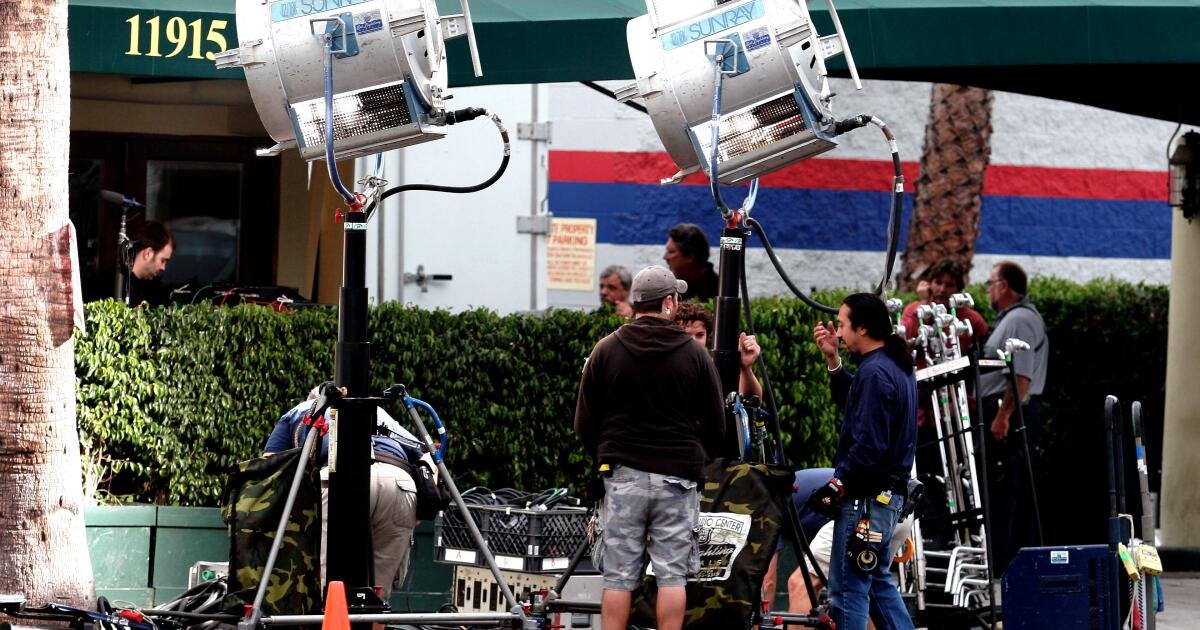Nine months ago, Gov. Gavin Newsom pledged to more than double the annual amount of funds allocated to California’s film and television tax credit program.
Flanked by Los Angeles Mayor Karen Bass, legislators and union representatives, Newsom said the state “needed to make a statement and to do something that was meaningful” to stop productions from leaving the state for more lucrative incentives in other states and countries.
Though Hollywood was born in California and the entertainment business became the state’s signature industry, “the world we invented is now competing against us,” he said at the time.
On Wednesday, Newsom signed a bill that will increase the cap on California’s film and TV tax credit program to $750 million, up from $330 million. Industry workers say the boost will help stimulate production that slowed due to the pandemic, the dual writers’ and actors’ strikes of 2023, a cutback in spending by studios and streamers and the Southern California wildfires earlier this year.
“We’ve got to step up our game,” Newsom said in a speech before he signed the bill. “We put our feet up, took things for granted. We needed to do something more bold and significant.”
The bill was passed by the state legislature last week and came after intense lobbying from Hollywood.
Rebecca Rhine, Directors Guild of America executive and Entertainment Union Coalition president, credited Newsom for staying committed to the production incentive boost even after the wildfires in Southern California, federal funding cuts, the state’s budget deficit and the deployment of the National Guard in Los Angeles.
“You understand that our industry is vital to the state’s economy and cultural vibrancy, while also sustaining thousands of businesses and attracting visitors from around the world,” she said during the signing ceremony. “Now, let’s get people back to work.”
Critics of the program and taxpayer advocates have said, however, that the tax credit is a corporate giveaway that doesn’t generate as much economic effect as promised. California’s increase also comes as states like Texas and New York have also ramped up their own film and TV tax credit programs.
But the fight isn’t over yet. Lawmakers and Hollywood industry leaders are gearing up for a vote Thursday in the legislature on a separate bill that would expand the provisions of the film tax credit program, which they say is key to making production more attractive in California and must pair with the increased program cap.
That bill, AB 1138, would broaden the types of productions eligible to apply for the program, including animated films, shorts, series and certain large-scale competition shows. It would also increase the tax credit to as much as 35% of qualified expenditures for movies and TV series shot in the Greater Los Angeles area and up to 40% for productions shot outside the region.
California currently provides a 20% to 25% tax credit to offset qualified production expenses, such as money spent on film crews and building sets. Production companies can apply the credit toward any tax liabilities they have in California.
The bump to 35% puts California more in line with incentives offered by other states such as Georgia, which provides a 30% credit for productions.
“This bill is the second step,” Assemblymember Rick Chavez Zbur said during Wednesday’s press conference. “It’s about maximizing economic impact, prioritizing equity and turning the tide on job loss.”
Newsom also held out hope for the possibility of a federal film and TV tax incentive, which he had floated in May after President Trump called for tariffs on film produced overseas.
“We’d like to see [Trump] match the ambition that we’re advancing here today in California with the ambition to keep filmmaking all across the United States, here in the United States,” Newsom said. “I am hopeful that we, in the hands of partnership, continue to work with the administration.”
